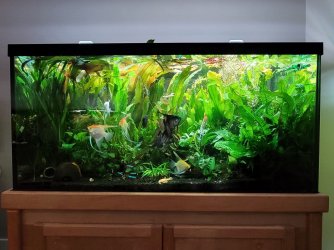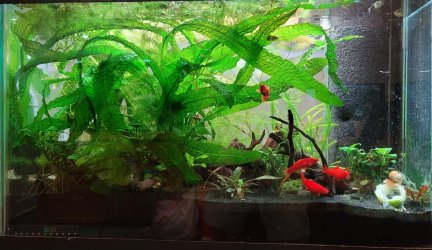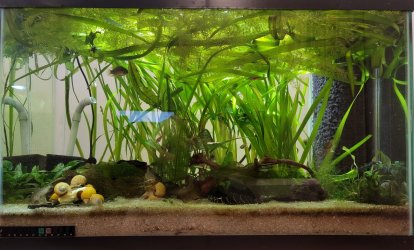Thanks so much for this Byron, so interesting! Really clears it up I have heard of H.Bolivianum before and I think it could be the kind of thing I am after. But I could have a good spot for a big sword too.I know you often appreciate the explanation detail, so my response is lengthy, lol. This is from my profile published elsewhere.
The plant itself is a natural wild species, but misnamed. The accepted species is Helanthium bolivianum (Rusby, 1947). [There is no valid species E. xinguensis.] This species was originally described by Rusby in the genus Alisma; the species epithet is Latin and means originating from Bolivia. In 1979, Holm-Nielsen moved it into Echinodorus, the second-largest genus of aquatic plants in the Alismataceae family. The Alismataceae is a family of aquatic herbs containing 12 genera with about 80 species that are distributed in the tropical and subtropical regions of both hemispheres. Three genera of interest to aquarists occur in the Neotropics [=tropical regions in the Americas]: Sagittaria, Echinodorus and Helanthium. The species in these genera are quite similar in appearance, making it difficult for aquarists to differentiate between them. To add to the confusion, even within each species the plants can take on quite different leaf lengths depending upon the conditions in the aquarium. With a few exceptions that grow fully submersed, the plants are amphibious bog plants in their habitat, spending roughly half the year emersed when they flower, and half submersed during the flooded period which lasts several months.
H. bolivianum is reported from areas in Mexico, Central America, West Indies, and South America down to northern Argentina. Nurseries frequently supply H. bolivianum as H. tenellum but the two species are easily distinguishable; H. bolivianum has three rows of chlorophyll-free pullucid "windows" adjacent to the leaf spine, while H. tenellum has normal (green) tissue throughout the leaf (Rataj, 2004). The subject plant is also larger in leaf length and width. I had both species, I'm not sure if my H. bolivianum survived but I have H. tenellum in my 40g cory tank now.
There are 11 "species" described by Rataj which are all now deemed to be the one species H. bolivianum, so the other names are synonyms (The Plant Index, 2021).
Aquarists who propagate aquarium plants have always recognized that while the various species in Echinodorus will readily hybridize, some even naturally--producing the many new red, spotted, and marble leaf forms--the chain swords have resisted hybridization with species in Echinodorus; this lends further credence to the view that the two genera are distinct.
[The taxonomic history, quite involved:]
The group Helanthium [the spelling Helianthium with the first "i" is incorrect] was described by Engelmann, Bentham and Hooker in 1883 as a section in the genus Alisma. In 1905, Engelmann and Britton erected Helanthium as a distinct genus and they assigned to it the dwarf chain sword species from Echinodorus. In 1955, Fassett reversed this and considered the species within Helanthium as Echinodorus; however, he divided the genus into two subgenera, Helanthium and Echinodorus. Helanthium held two sections, Nymphaeifolii (containing one species, Echinodorus nymphaeifolius) and Tenellii that contained the several closely-related species with E. tenellus as the type species. The subgenus Echinodorus held nine sections containing the remaining species within this genus. In his recent revision of the genus Echinodorus, Rataj (2004) followed Fassett (1955).
In phylogenetic analysis (Lehtonen 2006; Lehtonen & Myllys 2008) Echinodorus was found to be polyphyletic [=the last common ancestor is not included in the genus] and in order to obtain a monophyletic [=a clade (here genus) consisting of the last common ancestor and all descendant species] circumscription of the genus, the classification proposed by Pichon (1946) was followed by Lehtonen. E. nymphaeifolius was transferred into the genus Albidella, and E. bolivianus, E. tenellus and E. zombiensis were transferred into Helanthium.
The species now in Helanthium are those former Echinodorus species that have traditionally been considered within the generic common designation of chain sword plants (because they reproduce in aquaria via "runners") and are smaller than the true Echinodorus species, though leaf length can vary greatly depending upon conditions in the aquarium.
This is awesomeEnded up removing e.impai from my 200l (3' ish) as it took over. Size 8 foot for reference:
View attachment 147455
Wills




